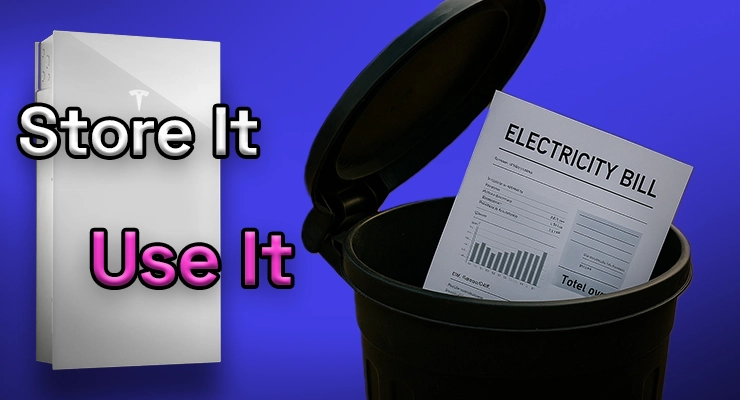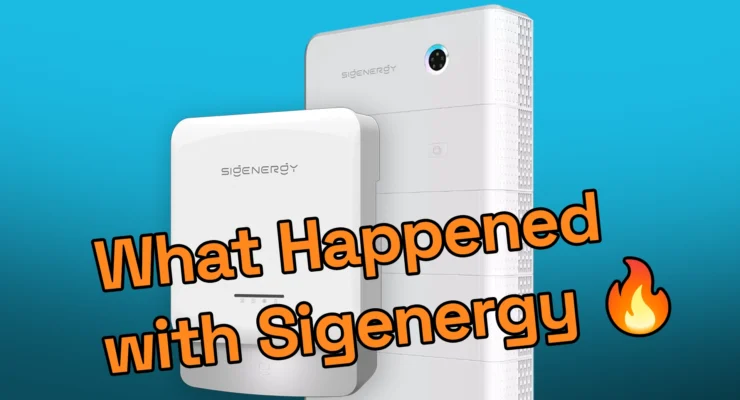Fast read
Solar batteries dramatically reduce your reliance on the electricity grid by storing the excess, unused energy your solar panels generate during the day. This stored energy can then be used to power your home at night, during cloudy weather, or even during a blackout, a concept known as self-consumption. This minimises the amount of expensive electricity you need to buy from your retailer and provides a valuable backup power source, giving you greater energy independence.
How do solar batteries help reduce grid reliance?
For many Australian homeowners with solar panels, the afternoon represents a missed opportunity. Your panels are often generating far more electricity than your home is using, and that valuable excess power is sent back to the grid for a diminishing return. A solar battery changes this equation entirely, transforming your home from a simple power consumer to a smart, self-sufficient energy hub.
By adding a battery to your solar system, you take a significant step towards what is often called ‘energy independence‘. This means you’re no longer just at the mercy of your electricity retailer’s fluctuating rates and the grid’s reliability. Instead, you gain control, using your own clean energy when you need it most. Let’s explore exactly how this works.
The power of capturing and storing your own energy
At its core, a solar battery’s function is simple: it stores surplus energy. Think of it like a dam for electricity. During the middle of the day, when the sun is bright and your solar panels are at their peak production, you’ll often generate more power than you can use. Without a battery, this excess is exported to the grid.
With a battery, this surplus energy is captured and stored for later. Instead of exporting it for a low feed-in tariff, you keep it for yourself. Then, as the sun sets and your panels stop producing, your home automatically begins to draw power from the battery instead of the grid.
This process is called “self-consumption”. Every kilowatt-hour (kWh) of stored solar energy you use is one less kWh you have to buy from the grid, often at a much higher price. Given that feed-in tariffs have fallen significantly across Australia, the financial logic of using your own power first has never been stronger.
How does this translate into real-world benefits?
Reducing your dependence on the grid with a solar battery offers several powerful advantages for Australian households.
- Lower electricity bills: The most immediate benefit is a significant reduction in your power bills. By maximising your self-consumption, you drastically cut down on the amount of grid electricity you purchase, especially during expensive evening peak hours. Over the lifespan of the system, this can lead to thousands of dollars in savings.
- Energy security during blackouts: Many modern battery systems can provide backup power during a grid outage. If the grid goes down, a properly configured battery can disconnect from the grid and continue to power your essential circuits, like lights, the fridge, and the internet modem. This provides invaluable peace of mind, particularly in areas prone to blackouts from storms or grid maintenance.
- Protection from rising energy prices: The cost of grid electricity is volatile and has been on an upward trend. By generating and storing your own power, you insulate your household from these future price hikes. You gain control over a larger portion of your energy costs.
- Reduced carbon footprint: By using more of your own clean solar energy, you further reduce your household’s reliance on fossil fuels, contributing to a healthier environment.
Taking grid independence to the next level
For some, the goal is not just to reduce grid reliance, but to eliminate it entirely. Fully off-grid systems, which are completely disconnected from the main electricity network, have long been essential for remote and rural properties across Australia. These systems rely on a robust combination of solar panels, a large battery bank, and often a backup generator to provide reliable, independent power year-round.
For those still connected to the grid, a new option is emerging: Virtual Power Plants (VPPs). A VPP is a network of individual home batteries, linked together and managed by a central operator. By joining a VPP, you can agree to let the operator use a small amount of your stored battery energy to help stabilise the grid during times of high demand. In return, you often receive financial rewards, such as bill credits or premium feed-in tariffs, which can help improve the return on your battery investment.
Is a battery the right choice for you?
Adding a battery is a significant investment, and the decision depends on your goals and energy usage patterns. If your primary aim is to maximise your savings, you’ll need to weigh the upfront cost against the potential bill reductions.
However, if your goals also include energy security during outages and a desire for greater independence from the grid, a solar battery becomes a much more compelling proposition. As technology improves and costs continue to fall, more and more Australians are finding that a solar battery is the key to unlocking the full potential of their rooftop solar system and taking control of their energy future.
If you’re considering how a battery could fit into your home’s energy plan, it’s wise to speak with an accredited professional. They can analyse your energy consumption, discuss your goals, and help you determine the right system size and configuration for your needs.




